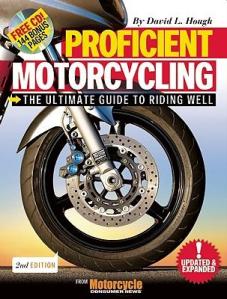You may have noticed a shortage of posts recently. With this post, I’m back to flogging the keyboard. And I begin with an explanation.
In April I upped my commitment to motorcycling and purchased a new mount – a Triumph Thunderbird 1600. With plans to do some motorcycle touring this summer, I realized that I could use a little more torque and horsepower than my Honda 250 Rebel could provide. Ahem.

Triumph Thunderbird 1600
I have the good fortune of living within a mile of one of America’s best-selling retailers of one of Great Britain’s most enticing exports: the Triumph line of motorcycles. Though the temptation to make frequent visits proved irresistible, I managed for a couple of years to restrain my impulse to “gear up.” Then, in April, Triumph rolled in their 2011 demos. This was my chance to see what I really thought of the Triumph America that had me drooling. I rode it and liked it. Of course. Then I rode the Speedmaster and decided there wasn’t much difference between them. Somebody suggested I ride the newly-released Triumph Thunderbird Storm. Okay, why not?
Why not, indeed! The America quickly dropped from the radar. In other words, the 1700 cc displacement of the Storm blew the 860 cc powerplant of the America right out of my mind. Literally within seconds of starting out on the Storm, I knew it was too good to be true. I would have to “settle,” now, for the America while dreaming of a Storm receding on the horizon. The Storm was just too much bike for too much money.
Out of curiosity, I jumped into the saddle of the Thunderbird 1600, the “base model” Thunderbird. The difference in torque was significant, but it had a lot of the virtues of the Storm. And the price was a bit lower. Not low enough for my wallet, though.

2010 Triumph America
So I went home to study up on the America, hoping I could be persuaded that it was the right bike. Along the way, I made the mistake of reading reviews of the Thunderbird 1600, introduced in 2009. This Triumph was uniformly trumpted as the crusier to turn heads. In 2009 and 2010, it was judged best cruiser on the road in North America.
Meanwhile, back at SoCal Triumph, they were lowering the price on the 2010 Thunderbird 1600 to make room for the new 2011’s. Jay, their chief salesman, was by now a familiar face. He could read me pretty well. My commitment to the America had grown tentative. To his credit, Jay never pressured me to go for the T-bird. But he did see me gravitating in that direction. And he did tell me that in addition to the special they were running on the 2010, they would include a windscreen, a touring seat, and a sissy bar and pad in the price. The only thing that didn’t resonate with me (still doesn’t) was the concept of a sissy bar. But that wasn’t a deal-breaker. The only remaining question was what 2010 Thunderbirds they had in stock. I was in luck. There was one blue bike in the inventory, with a wide white stripe garnishing the tank and fenders.
I immediately realized t hat I would find a way to crunch the numbers in favor of the Thunderbird. This would take some time and effort. Intense concentration would be required. I would have to put a hold on blogging for a few days.
hat I would find a way to crunch the numbers in favor of the Thunderbird. This would take some time and effort. Intense concentration would be required. I would have to put a hold on blogging for a few days.
A few days. That was in April. So why so long getting back online?
I bought the Thunderbird, that’s why. And a new Thunderbird has to be broken in. You understand.
Now, 3500 miles later, I’m back to check in here. And since the next best thing to riding is talking about riding, here I am talking about the new ride. I’m sure future posts will report on specific rides. Here I’ll just note that a week ago I returned from a five-day, 1500-mile jaunt up the California coast and back. For the past week I’ve been scheming and planning. Mid-July I hope to be back on a northerly bearing, this time with Washington state’s Olympic Peninsula as a destination. The trip will include numerous visits with friends and family, some camping, and lots of great riding.
I’m already thinking about future trips. A guy’s got to justify his guilty purchases! Maybe some day my travels will bring me to your door, every bone in my body vibrating, a sleeping bag in my tingling hands, asking the favor of a roof over my head.
Note:

I didn’t see a single other Triumph on the road during my recent coastal tour. Lots of Harleys, though. I’m happy to report that Harley riders have been remarkably friendly. I won’t say they’re jealous. I might think it, but I definitely won’t say it. I’m outnumbered about a million to one.
 (a) costs nothing, (b) is searchable, (c) can be saved to any computer or iOS device, and (4) can be printed, in whole or in part, as needed. Does it really get any better than that?
(a) costs nothing, (b) is searchable, (c) can be saved to any computer or iOS device, and (4) can be printed, in whole or in part, as needed. Does it really get any better than that?









Recent Comments